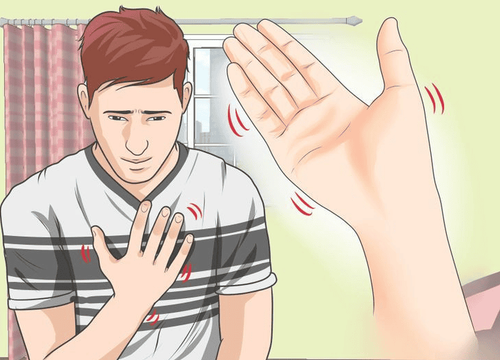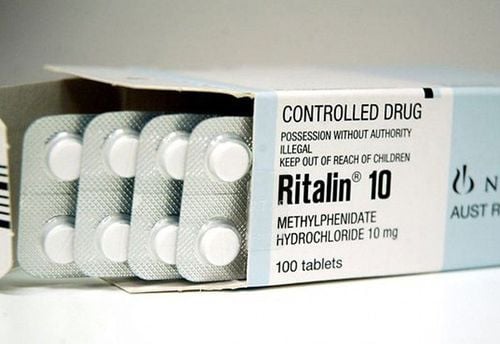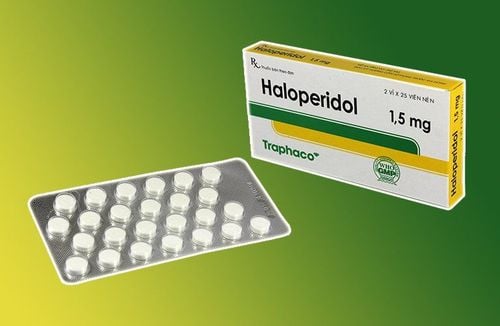This is an automatically translated article.
Many people feel worried about what is the state of sleepiness and fatigue. In fact, excessive sleepiness or excessive daytime sleepiness can have many causes. The majority of cases of somnolence are secondary and are often associated with brain tumors, encephalitis, central nervous system physical damage, Parkinson's disease, head trauma, and various genetic disorders.
1. What disease is somnolence?
Fatigue is excessive sleepiness during the day. People with this condition may not feel refreshed when they wake up, even after a long sleep. As a result, these subjects may feel compelled to sleep at any time of the day, including at work or during meals.
If you have idiopathic hypersomnia, provided you usually sleep more than 11 hours a day and may also have difficulty waking up, your social, family or work life will be significantly affected.
2. What are the causes of excessive sleepiness?
According to the researchers, somnolence should be classified as primary or secondary. Primary somnolence is a neurological condition that occurs on its own and has no known underlying cause. In contrast, secondary somnolence occurs as a result of a pre-existing medical condition and usually accounts for the majority of cases.
2.1 Secondary somnolence Excessive sleepiness and fatigue are often secondary to or one of the symptoms of a variety of medical conditions, including:
Medical conditions: Parkinson's disease, epilepsy, hypothyroidism, multiple sclerosis and even obesity. Excessive sleepiness can also develop and be aggravated by brain tumors, traumatic brain injury, and central nervous system diseases. Using drugs or substances: Certain sedatives, alcohol, and drug use can cause drowsiness. Even extreme drowsiness can be a symptom of discontinuing stimulants and certain psychotropic drugs. Inadequate sleep syndrome: This is perhaps the simplest and most fundamental cause of extreme fatigue and sleepiness. Inadequate sleep syndrome occurs when a person repeatedly does not get enough sleep for long periods of time. Not spending enough time sleeping, not sleeping well or having an unstable work schedule, night shifts often make it difficult to achieve effective sleep. Psychiatric Disorders: Many mental disorders can lead to excessive sleepiness and chronic fatigue, including depression, bipolar disorder, and seasonal affective disorder. 2.2 Primary somnolence Primary somnolence describes an abnormal condition that occurs on its own and is not the result of any other condition. Accordingly, the most common causes are CNS, including type 1 and type 2 narcolepsy, Kleine-Levin syndrome, and idiopathic somnolence.
Narcolepsy type 1: This is a chronic neurological disorder caused by insufficient amounts of a neurotransmitter called orexin. Although lethargy is a symptom of type 1 narcolepsy, other symptoms include sudden muscle weakness, sleep paralysis, and hallucinations. Type 2 narcolepsy: Type 2 narcolepsy includes many of the same symptoms as type 1, but does not include lethargy and is not caused by orexin loss. Kleine-Levin Syndrome: Kleine-Levin syndrome is characterized by recurrent episodes of extreme depression that occur along with psychiatric, behavioral, and even psychiatric disorders. This condition mainly affects young men, and episodes usually go into remission over a period of 8 to 12 years. Idiopathic Insomnia: If a patient is excessively drowsy, has no reflexes, is not refreshed by naps, or sleeps restlessly, then idiopathic insomnia may be diagnosed.

Có một số nguyên nhân khác nhau có thể gây buồn ngủ nhiều
3. Symptoms and Complications of Hypersomnia
Excessive sleepiness often causes the patient to have an excessive need for sleep. These subjects may sleep during the day and for long periods at night. At the same time, they may also have difficulty waking up, even with an alarm set.
Complications of somnolence include:
Anxiety, irritability, and restlessness Chronic fatigue Difficulty thinking or concentrating Speak slowly Hallucinations Decreased appetite and weight loss Problems memory problems Difficulty or maladaptive in social life and work, especially work requiring alertness such as driving or operating machinery.
4. How to treat excessive sleepiness?
Treatments for hypersomnia will vary depending on any accompanying symptoms and the classification of the disease. Accordingly, a particular patient's treatment plan may include behavioral therapy, medication, or a combination of the two.4.1 Behavioral Therapy Cognitive behavioral therapies aim to strengthen the bedtime cues and weaken the wakeup cues. The goal of therapy is to improve the quality and quantity of sleep, as well as reduce thoughts that interfere with normal sleep. In addition, lifestyle changes such as: Avoid working at night and limit social interaction late in the evening, take a warm bath before going to bed to ensure sleep hygiene.

T ắm bằng nước ấm trước khi có thể khắc phục tình trạng buồn ngủ nhiều
4.2 Taking medicine Depending on the cause of the disease, the doctor will have a different treatment. In particular, for the cause of stimulant use, the most effective treatment must be detoxification.
In summary, excessive sleepiness often causes excessive daytime sleepiness. In primary somnolence, symptoms occur regardless of the quality or quantity of a person's sleep. In contrast, secondary cases are often predominant and should be treated appropriately with behavioral therapies and medications to help reestablish cognitive alertness. Therefore, if not actively looking for what is somnolence and fatigue and intervention, this condition can cause disruption to daily life, sometimes life-threatening accidents.
Currently, Vinmec International General Hospital is one of the most prestigious medical treatment units for neurological diseases in Vietnam. The Department of Neurology at Vinmec has the function of examining, diagnosing, consulting and treating diseases related to neurological factors, including headaches, vestibular syndrome, cerebellar syndrome, dementia The typical method of the department is to use intravenous and arterial fibrinolytic drugs for stroke cases, along with the combination with paraclinical means such as electroencephalography, electromyography. ST Scan, MRI,...
Neurological examination at Vinmec, customers will be:
Examination by a team of highly qualified and experienced specialists. State-of-the-art equipment, comparable to major hospitals in the world: The most modern operating room in the world; The most modern silent magnetic resonance imaging machine in Southeast Asia; The 16-sequence PET/CT and SPECT/CT systems help in early detection of neurological damage even when there are no symptoms of the disease. Apply the most advanced intensive treatment techniques in the world in treatment.
Please dial HOTLINE for more information or register for an appointment HERE. Download MyVinmec app to make appointments faster and to manage your bookings easily.













